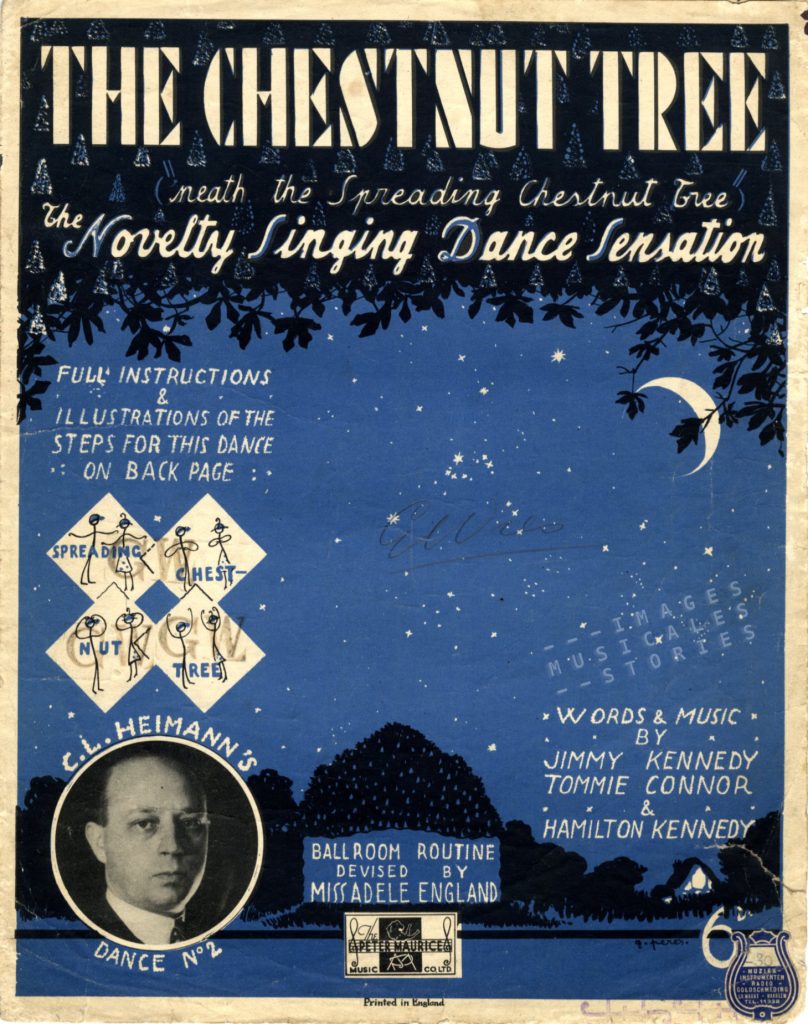
In these posts we already turned our attention to a few British dance crazes. Think of the springy Sir Roger de Coverly, or the Northern Soul dance style of the 70’s. Perhaps you do remember the catching, working-class Lambeth Walk. Well, here is another one of these singing dance sensations: The Chestnut Tree. Hip hip hurray!
The Chestnut Tree was the second in a series of five novelty dances, of which the Lambeth Walk was the first. The dances were launched in quick succession by the outbreak of WWII, and were produced by the Mecca Dance Halls —at the time the largest dance hall chain in England. At the head of Mecca Dance was clever Carl Heimann, advertising himself in the medallion on the cover.
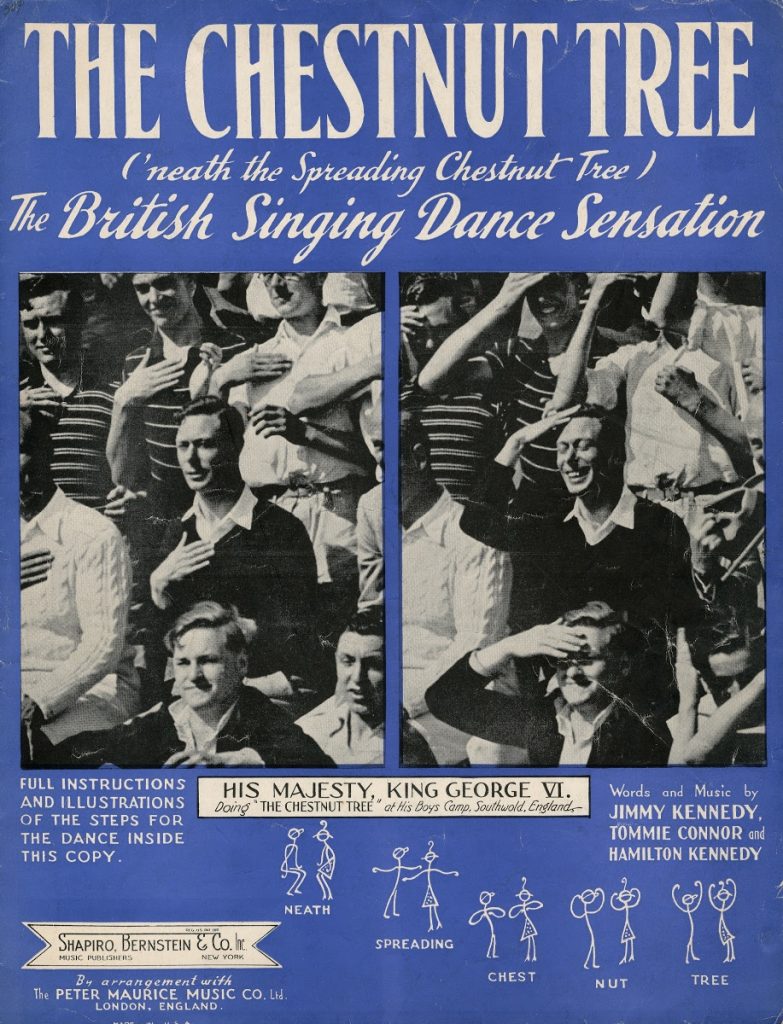
The American version of The Chestnut Tree cover shows us that even King George VI was tapping his breast and his head while singing along. Or wasn’t he?
In a newsreel of 1936 we see King George VI, then still the Duke of York, joining in a singalong while visiting a camp for teenage boys. Together they sing Under the spreading chestnut tree, an action song of only one verse, that is repeated again and again while certain movements replace some of the words.
Under the spreading chestnut tree,
Where I held you on my knee,
Oh how happy I should be,
Under the spreading chestnut tree.
The action song was a great hit for the royals as witnessed by this other newsreel from 1939 — even the Queen and the princesses are joining in.
It was the success of these images of the King tapping his knee, breast and head, that inspired the creators at Mecca Dance to package the children action song as a new novelty dance. Indeed, hadn’t the publicity already been done by the King himself? Thus, The Chestnut Tree was born…
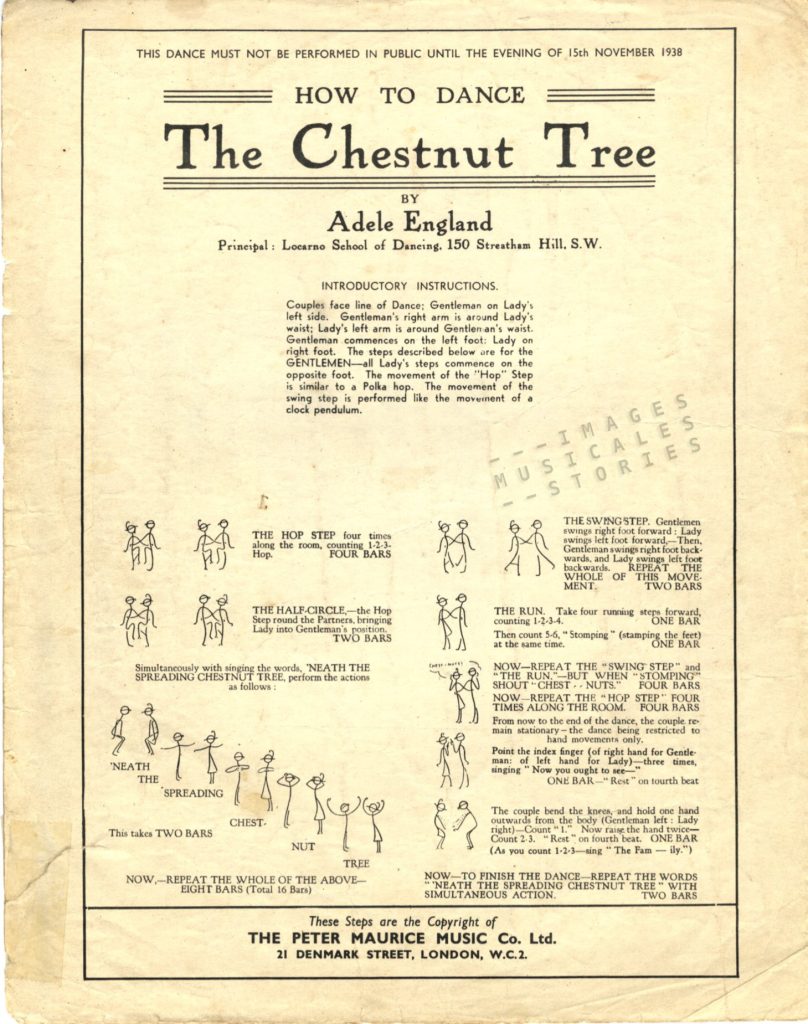
Adele England was the leading teacher in the Locarno, Mecca’s flagship ballroom in Streatham, south London. She devised the dance hall routines for Heimann’s five novelty dances. For The Chestnut Tree she was not only inspired by the action song, but also inserted elements of the polka in order to appeal to the older patrons: the dancers were invited to circle the dance floor mimicking a tree, and to conclude by boisterously shouting ‘Chestnuts!’
Mecca tried to replicate its success by creating a third dance: The Park Parade about a couple taking a romantic stroll in the park on a summer’s day and by distributing free straw hats for the dance’s launch. In the newsreel below we can see and hear Miss Adele England explaining the ball room routine.
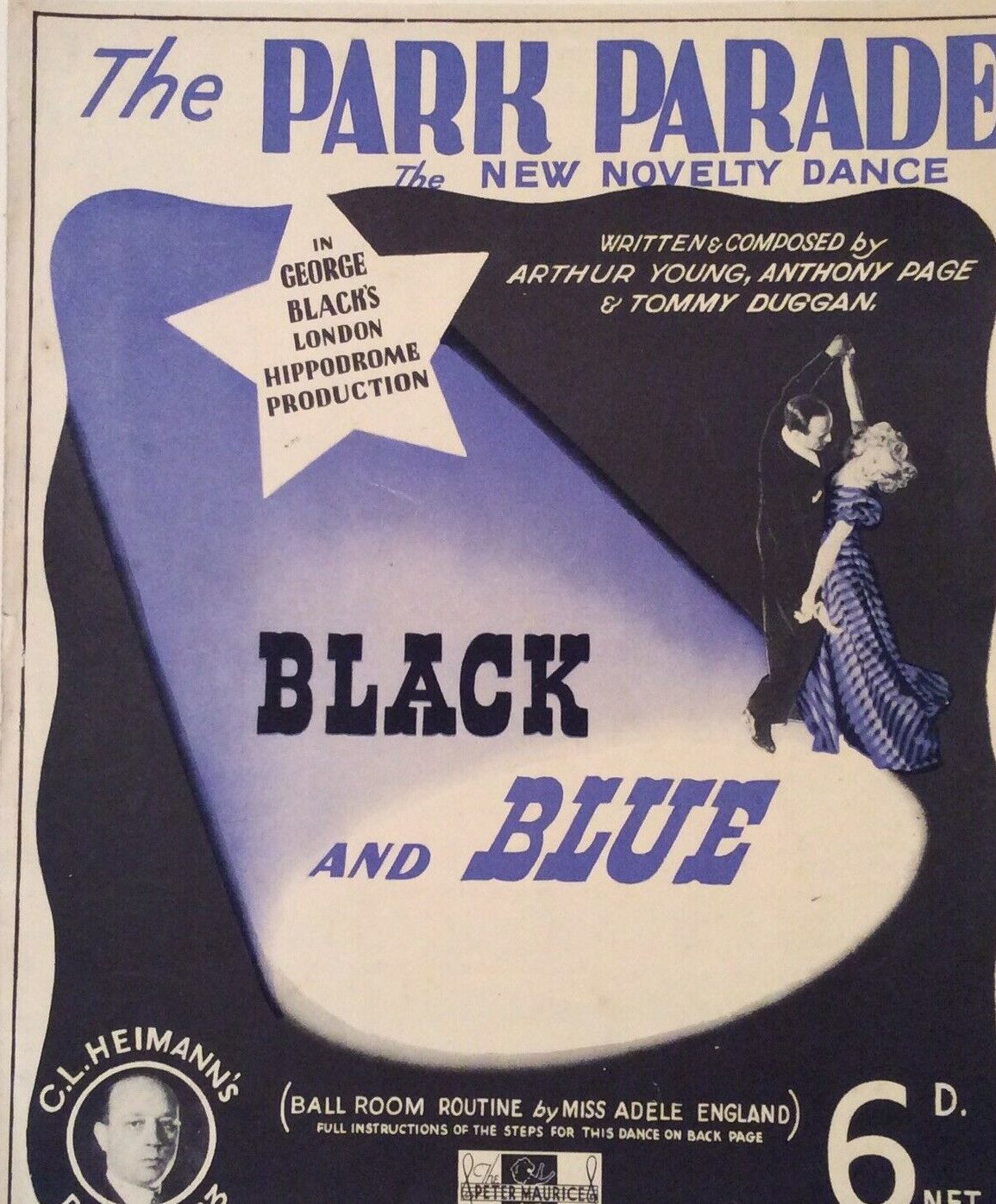
Heimann’s novelty dances all had the same mix of ingredients. They were quintessential English with English composers, producers and developed by an English dancer. They were meant to be performed by (mostly white) Britons of all ages, with or without dancing experience, rich or poor alike. The dances were a simple arrangement of steps performed in repetition while the patrons circled the dance floor in couples. All routines included shouting together and were meant to be a good laugh.
Heimann didn’t leave to chance the success of his novelty dances. Instead he devised huge promotional campaigns to launch them all over England. First the sheet music including dance instructions was sent to the press and to both the Mecca and non-Mecca dance halls, free of charge. It came with a warning that the dance was not to be performed in public before the date of the national launch.

The dances then all had a simultaneous debut at the Mecca dancing halls throughout the country. Professionals demonstrated the dance first and then invited patrons to join in. The words of the song were displayed on large banners along the dance halls so that everybody could sing along. And the very same day the sheet music and gramophone records would go up for sale.
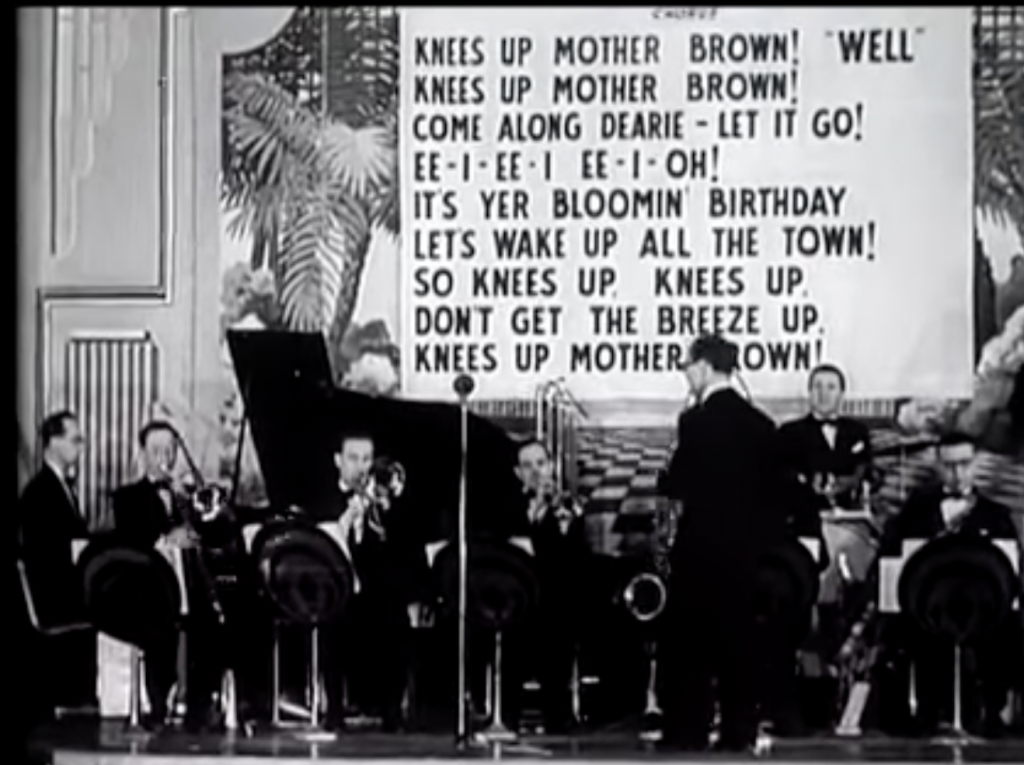
The fourth (Handsome Territorial) and fifth (Knees Up, Mother Brown) novelty dances were less successful. During the war the dance business, owing to the presence of the large number of American servicemen and the jitterbug craze, would become explicitly less ‘British‘ and more Americanised.
Time to get your knees up!
Further reading: Doing The Lambeth Walk: Novelty Dances and the British Nation, by Allison Abra
